The past two weeks have been the cream center of my Oreo vacation—sweet and soft, bookended in Pokhara, where I wrote my last update and where I sit now again, writing this one. Time off has continued to be a treat, my days peaceful and pleasantly busy, surrounded by my family and others. I’ve been able to see so many more corners of this country than I expected, and every place that I go has given me just a bit more context and understanding for how Nepal works, the villages where all the people in Kathmandu are coming from, their homes and environments and cultures. We begin this time where I left off before, up on a hill outside Pokhara, in the shadow of the Himalayas.
I slept with my window shade open just a few inches, and woke up several times in the night, checking for the glow of the mountains in the starlight. Seeing faint clouds, I rolled back over to go to sleep, though the view was still spectacular when I woke up, and we ate breakfast against a beautiful snowy backdrop. Then we hopped in a jeep and drove to the start of our hike, which was sunny and sweaty despite the clouds covering all the mountains. My dad, my mom, Ellen and I worked our way up to Australian camp with the help of our guide, Ngima, and had a small lunch looking down over bright green river valleys.
The next morning, checking again out my window, I saw nothing but shining snow and stars. I hauled myself out of bed and onto the roof, where I watched the sun hit the peaks of the Annapurnas without a wisp of a cloud. As the sky turned from deep violet to blue, we said goodbye to Pokhara (though my Dad and I were soon to return), and our group separated. My mom, Ellen, and Ngima went to Chitwan, a national park in south central Nepal, by way of Bandipur, a small Newari town known for its culture and beauty. I was dropped off with my dad at the airport, where we flew to Nepalgunj, a city in the southwestern corner of Nepal, and took a two hour ride to reach Bardia National Park.
Many people don’t realize the impressive full range of Nepal’s geography, associating it entirely with mountains and assuming it to be a cold, thin-aired country. In fact, Nepal’s well known highest point (29,031ft/8848m) in the north is countered by the country’s lowest point of only 194ft/59m in the south. The country lies perfectly against the tectonic gradient such that the high, snowy mountains give way to green hills, which in turn slowly taper out into perfectly flat, open plains known as the terai. And because Nepal is on around the same latitude as Baja California, the Terai region is hot, humid, and full of alternating rice fields and jungles, a totally different world from the rest of the country.
To be honest, I always knew the south of the country was there, and I knew people went to visit or even stay there, but I never understood the appeal. In my eyes, Nepal was the country of the Himalayas, and I couldn’t understand why anyone would want to be anywhere that wasn’t as close to the mountains as possible. When I heard about people not only traveling but living and working in the Terai, it didn’t make sense to me: all I could picture was flat, dusty landscapes and no way to escape from the oppressive heat.
And then I arrived. At first, it seemed like what I had expected, hot and crowded, and I was glad we had only planned three days there. As we moved, the buildings slowly began to fall away, replaced by villages and forests. I softened, but I wasn’t convinced. We entered the national park on a section of the highway that passes through it, and we came to a bridge where our guide told us that we were going to get out and walk across. Suddenly, as my view opened, I saw a lazy green river winding its way through sandy islands covered in swaying grass, crocodiles in the water by the dam waiting patiently for an unlucky fish to come tumbling over, and a forested cliff looking down over it all. The beauty of the place hit me all at once, even more powerful than the humidity when I stepped out of the air-conditioned car.
We arrived at our hotel and practically swam through the air to our room, where we rested for a minute before being put up on the back of an open safari jeep and driven out into the unknown. Bardia is considered Nepal’s most remote national park, and for good reason. Flying straight to the nearest city from Kathmandu takes an hour, and then the drive to the park is another two or three hours. By the time you arrive, there isn’t a building over two stories in sight, no main street with shops and restaurants like so many of the other tourist hubs in Nepal. When we turned out of our hotel, we drove on a dirt road along the river past villages and forests, and the south of Nepal began to cast its spell on me.
The Terai posses that slow magic of hot places. After sitting in a treehouse in the forest for several hours waiting to see if any animals would come by (they didn’t), we drove down to the river. The sun hung like an orange over the horizon, reflected perfectly in the unhurried waters of the river, and it lit the grass on the banks on fire. As we wound our way back home, the air hung thick with the warmth of the day even after the sun was gone, and the smoky haziness melted everything away, making me forget about my sweat-soaked shirt and sore body. We saw families laughing outside their houses illuminated in pale fluorescent light, kids riding their bikes home, adults taking dusk baths by water taps, friends walking winding paths together, parents cooking dinner, buffalo grazing near golden rice fields in the fading light. It was easy, and easy to love.
At 6:00 am, we left the hotel by jeep to enter the park, which is open sunrise to sunset, and peered through the dewy, cool air for a glimpse of the thing that brings people to Bardia: the Bengal tiger. We packed a lunch and spent about twelve hours in the park, mostly driving but occasionally searching on foot for this elusive animal, parked at intersections with our heads on a swivel, sitting on riverbanks for hours, following prints down riverbeds. After a few hours it really started to heat up, and I was more than happy for the respite of a nice long break in the shade of a view tower.
Because we were visiting just after the monsoon, many of the open areas were covered with grass ten or fifteen feet tall, making it impossible to see anything, so we spent most of our time in the jungles, surrounded by towering trees covered with vines reaching down for earth. We saw spotted deer grazing on food dropped by langur monkeys, an animal friendship that provides both of them safety from predators thanks to a combination of the deers’ sense of smell and the monkeys’ treetop lookouts. There were plenty of birds, other kinds of deer, and other small animals, and no trace of a tiger beyond prints. But then, right as the day was coming to a close and it all seemed like a wash, our guide got a call and we sped down the bumpy road to park behind a lineup of jeeps. When we jumped off and ran up to the front, in front of us there was a stunning leopard, even less common than a tiger, strolling carefree just a hundred feet down the road.
The next morning we were first on the scene when our guide heard a deer’s warning bark and led us straight to the same leopard, less than fifty feet away in the undergrowth this time. But despite a great start, the day took a turn as it started to rain, and even peeping out from under the beach umbrella our guide put up for us, we didn’t see any other animals out braving the rain. The temperature came down and stayed down, much milder than the usual climate, and the next day the rain continued, causing so much mud that no jeeps were allowed in the park at all. Instead, we went on a mellow ride down the river on a raft, where we enjoyed the gentle current from underneath the same beach umbrella. We were brought to another tower, where we picked off leeches and ate lunch, then our guides took turns napping while we hoped against hope for a tiger that never came.
The rain continued for a full week, in a sort of unusually late end to the monsoon, which normally ends half a month earlier. Unexpected severe precipitation across the country brought huge problems, especially for transportation, causing landslides and delaying drives and flights that trapped many people, especially those in difficult areas to access. Luckily, our flight departed with no issues besides some highly unenjoyable turbulence, unlike some of the unlucky trekkers in more remote areas. The heavy rain, unusual this late in the year, was just another example of the longer summers and erratic weather that are becoming more and more common here.
My dad and I met back up with my mom and Ellen, who had an amazing time in Chitwan, similar to ours but with rhinos instead of a leopard. We went to Thamel together, the tourist neighborhood where I spent my first two weeks in Nepal, and I showed them the hotel I stayed in while walking around and shopping for kitschy t-shirts and pashmina scarves. The next day we went to Patan, completing all seven of the UNESCO world heritage sites of the Kathmandu valley, and sat in a cafe watching people fly kites hundreds of feet over the city as the festival of Dashain came to an end. When kites got tangled and fell, the fliers cut the rope, picked up another colorful paper kite, and threw it up in the air to begin again.
That night, we said goodbye to my mom and Ellen at the airport as they left to go back to the US, and the first chapter of my vacation came to an end. I spent the next few days with my dad, taking it easy around Kathmandu, resting and enjoying a little peace before the next part of our trip. We visited some museums around the city, including the palace where the king of Nepal used to live before the abolishment of the monarchy in 2008, which was also the location of the mysterious Nepali royal massacre in 2001. In the evenings, we wandered around the neighborhood by our hotel in search of Thai, Vietnamese, and Chinese restaurants.
A few days after my mom and Ellen left the country, two new adventurers came to join our group: my Dad’s friend Bob and his daughter Ada. Our first stop was in the south of the country again, this time Chitwan National Park, where we spent a few days exploring more jungle and grassland. It was a bit more built-up than Bardia had been, closer to the city, but once we left the main street it turned into rice fields and forest pretty quickly. The rain had finally passed, this time hopefully for good, and it was hot in the city but surprisingly cool in the jungle.
We went on some shorter jeep safaris, where we saw several of the animal that Chitwan is most known for: the one-horned rhino, from near and far, walking on roads, bathing in rivers, grazing in open fields. Our guide there specialized in birdwatching, so we went on a beautiful morning walk and a dugout canoe ride with the specific purpose of finding beautiful birds like hornbills, egrets, and owlets (plus a few crocodiles in the water). We went to an elephant breeding center, where I could’ve stood for hours to watch the three baby elephants there running around and playing with each other. And on the last afternoon, when we decided to skip the elephant-back safari in favor of a jeep safari, our good karma was repaid with another leopard sighting, this time a big male perched twenty feet up in the branches of a tree.
Bob and Ada are old friends of the family who we met back in 2008, when we happened to all be living in the same small town in Costa Rica for a year (though that’s a story for another time). I hadn’t seen them in probably ten years, but after coming back to the US my parents remained friends with their family, going out a few summers to Montana, where they live, to hike with Bob and his wife. It’s been fun to see them, and it’s also been really fascinating for me to talk with them and reflect on the circumstances where we met, when we were all living abroad.
Because maybe it’s not a story for another time: I was living in a foreign country and going to a school there fourteen years ago, and now, albeit in a totally different context, I’m doing more or less the same thing. At the time, I hated being in Costa Rica, far away from my friends and everything I knew, in a place where I felt lonely and isolated. But, looking back on it, that experience was massively important for me and informed so much of who I am today; I can trace a direct line back in my brain from my decision to come to Nepal to that first experience of living abroad in Costa Rica, and confidently say that I would not be here now if I had not been there then. When I am at my lowest here, I often think back to that year, how miserable I felt, and how much I got from it, am still getting from it after all this time.
These days, we’ve been traveling by road, a dusty and patience-testing endeavor in these parts. Many of our hours swapping memories of time together and stories of time apart have gone by during long car rides, from Kathmandu to Chitwan, Chitwan to Pokhara. Going by car is not a new experience for me, and taking it slow has its advantages and disadvantages. Seeing beautiful villages nestled right in the valleys that the road passes through, coming around an unsuspecting corner and seeing white peaks reaching into the sky, and watching rivers shaping rocks on their way down to the place where the hills end are among the pros, while the main con is that taking it slow really can mean taking it slow. But when the roads get bumpy, which is more often than not, I’m lucky to have people to chat with and priceless views just outside the window.
Now we’re back in Pokhara, where we spent today doing a shortened tour of the local highlights. And tomorrow is the day that I’ve been waiting for, when I finally get to set back out onto the trail for the first time since May, almost half a year ago. All throughout the long, hot, rainy, cloudy summer, the thought that kept me going was this: that one day, not too much later, I’d be able to leave the city behind and walk out into the hills, where I want so badly to be. Passing through rural areas here always has a bittersweetness to it, since I don’t want to be just passing through; I want to stay there like I thought I would be for this whole year. But, right now, my excitement is overpowering any negative thoughts: all I can think is how lucky I am to be here, and all I can hope is that one day I’ll be able to look back on this the way I look back on my other memories of living abroad, with joy and forgiveness.
Until next time: peace!
Much love,
Oren






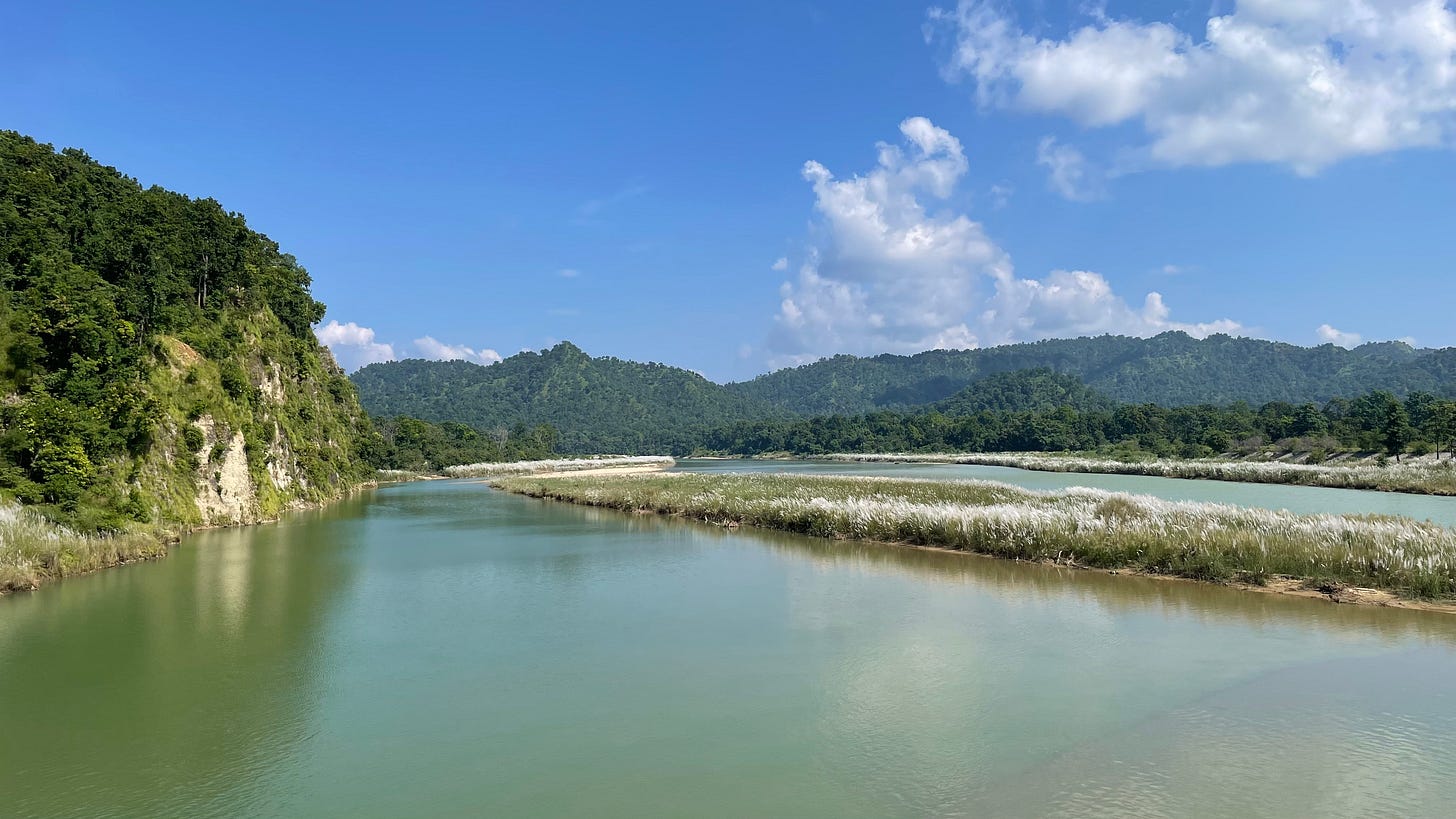
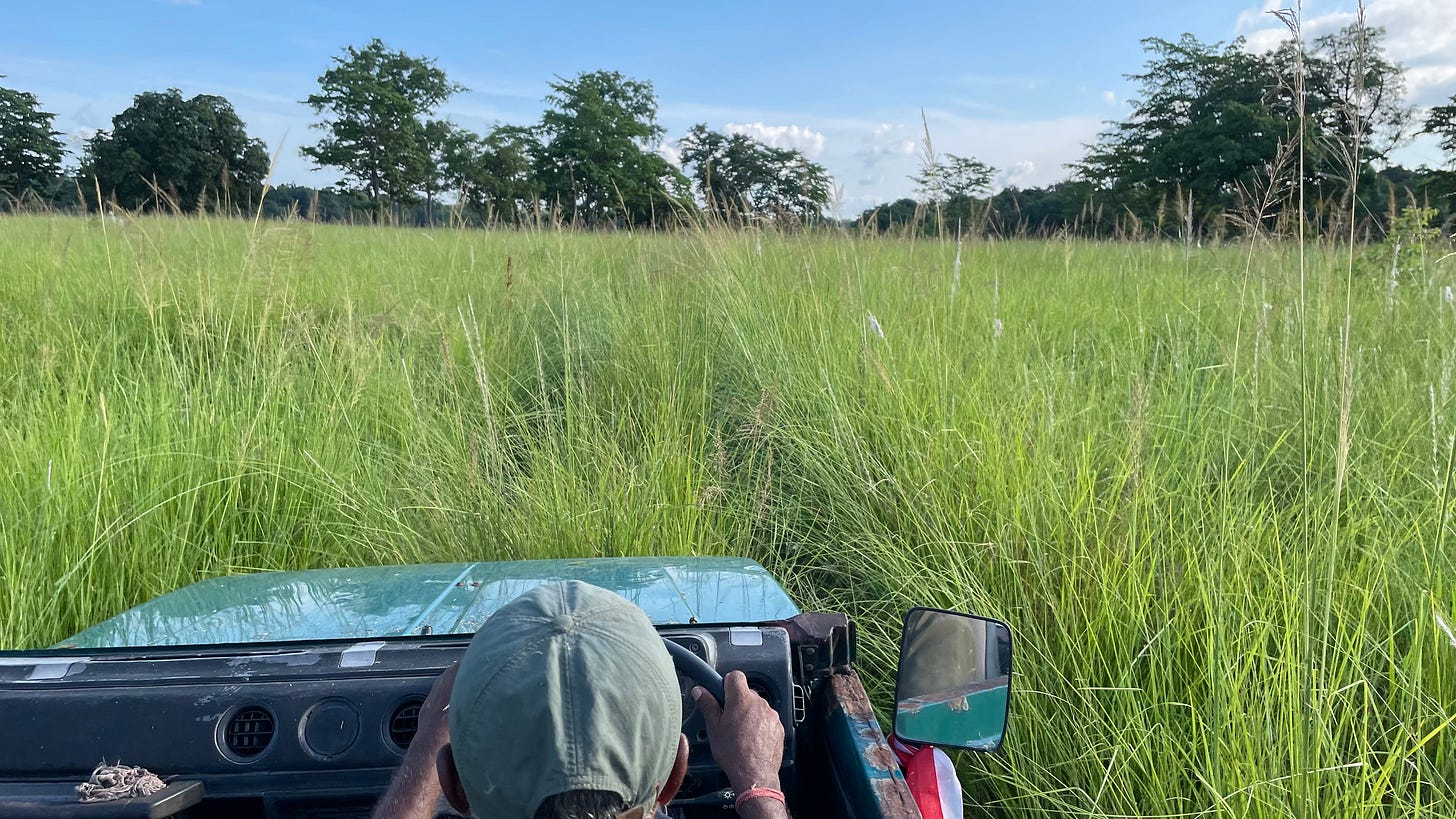
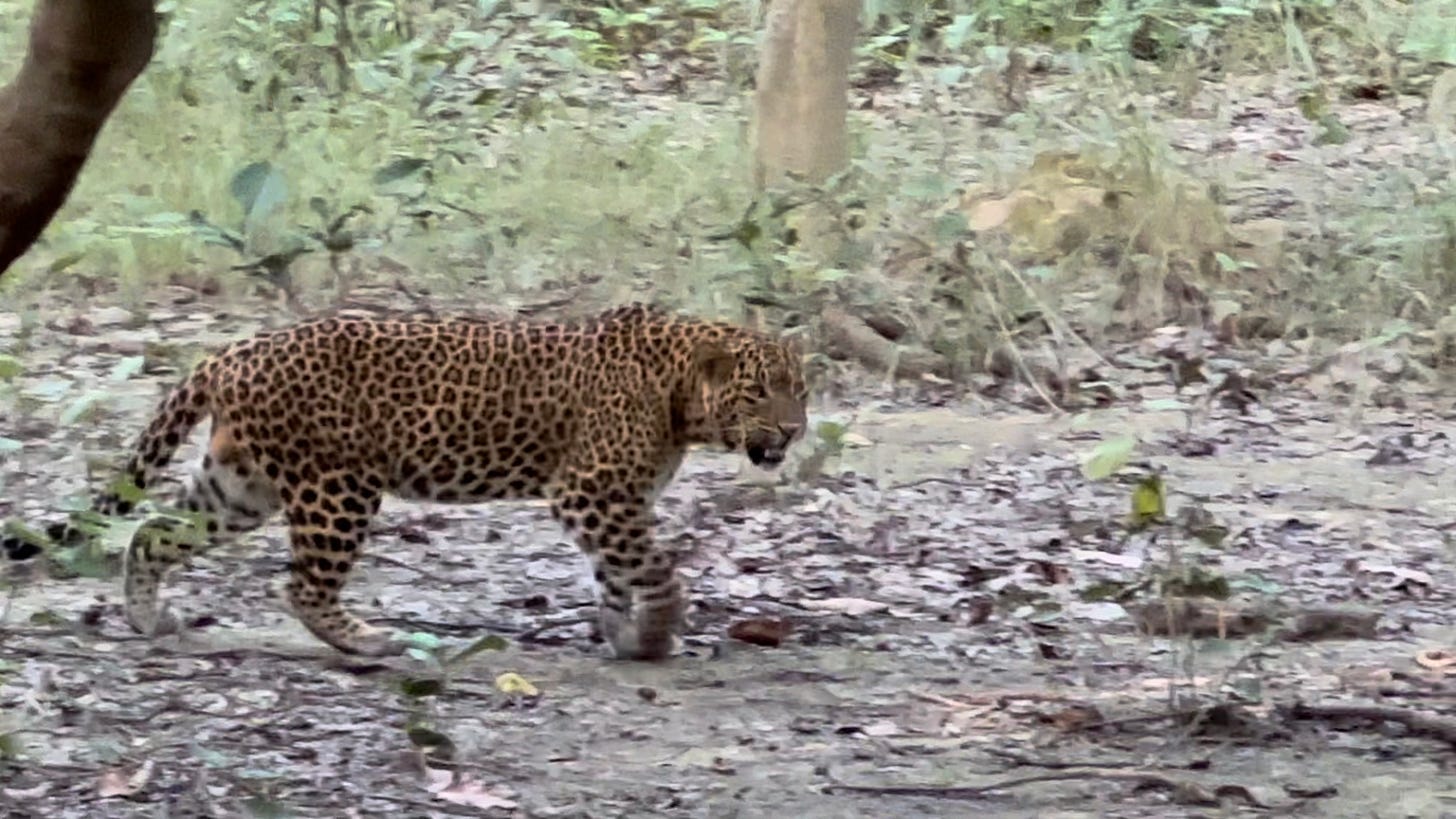
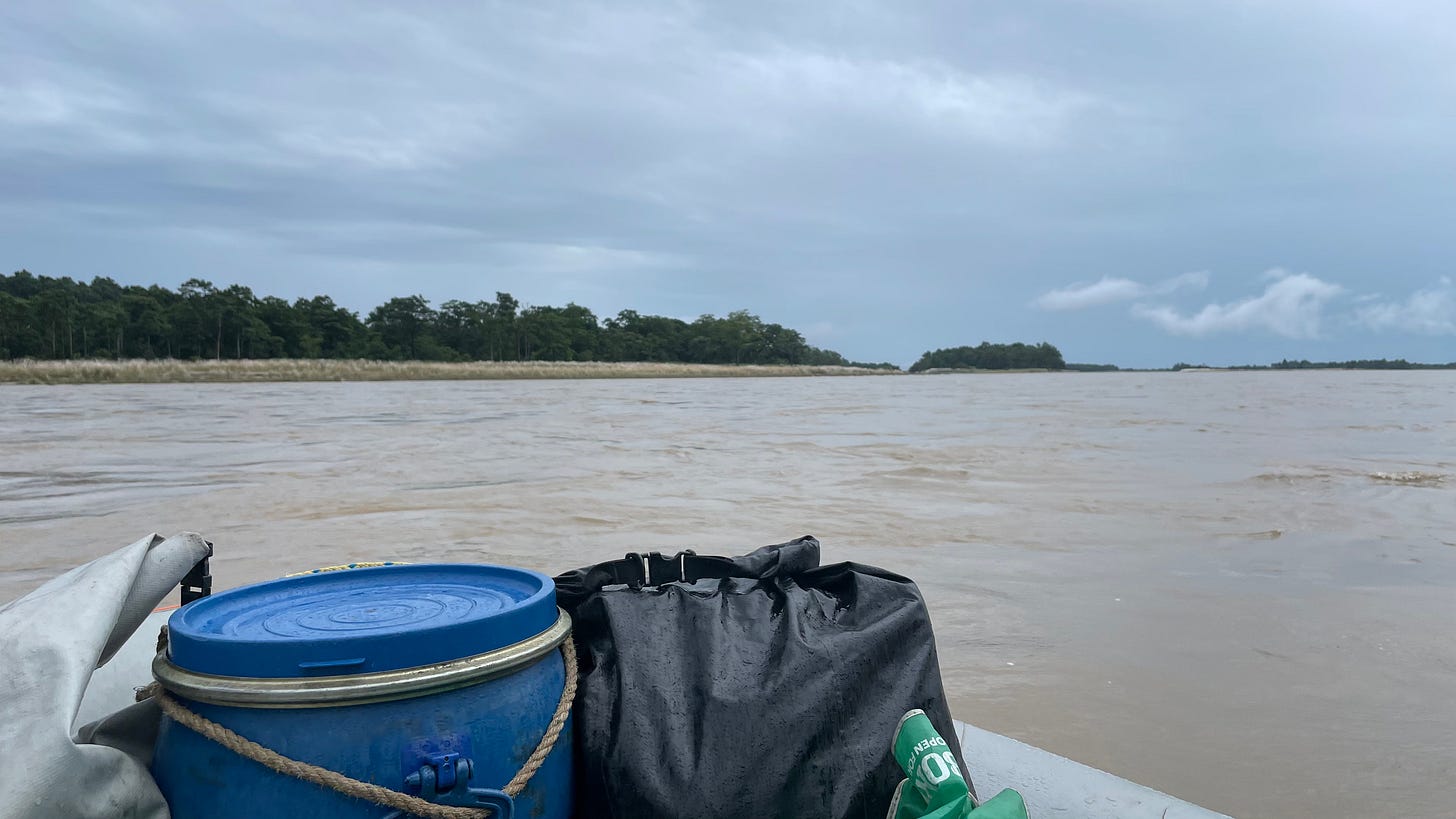
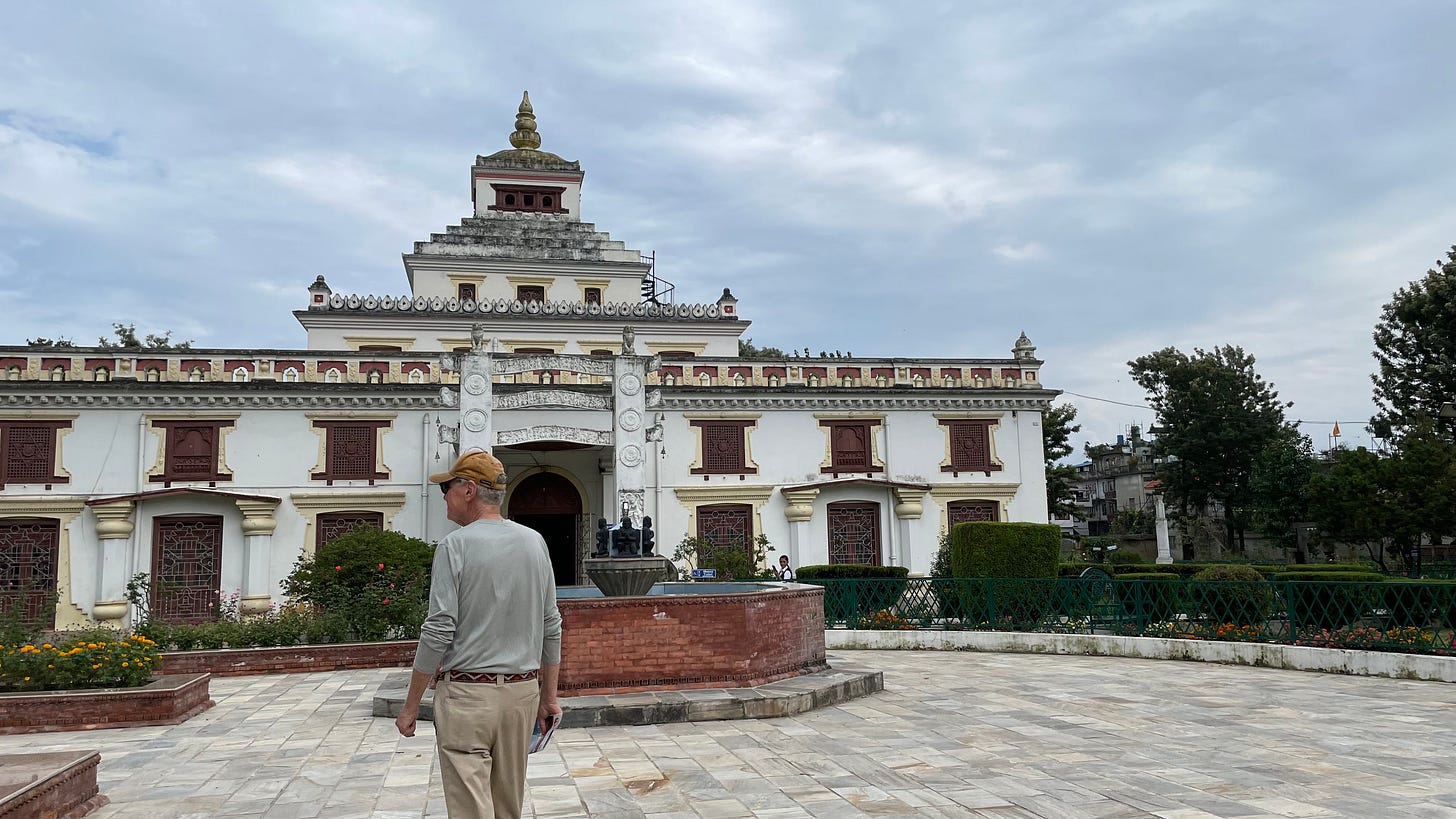
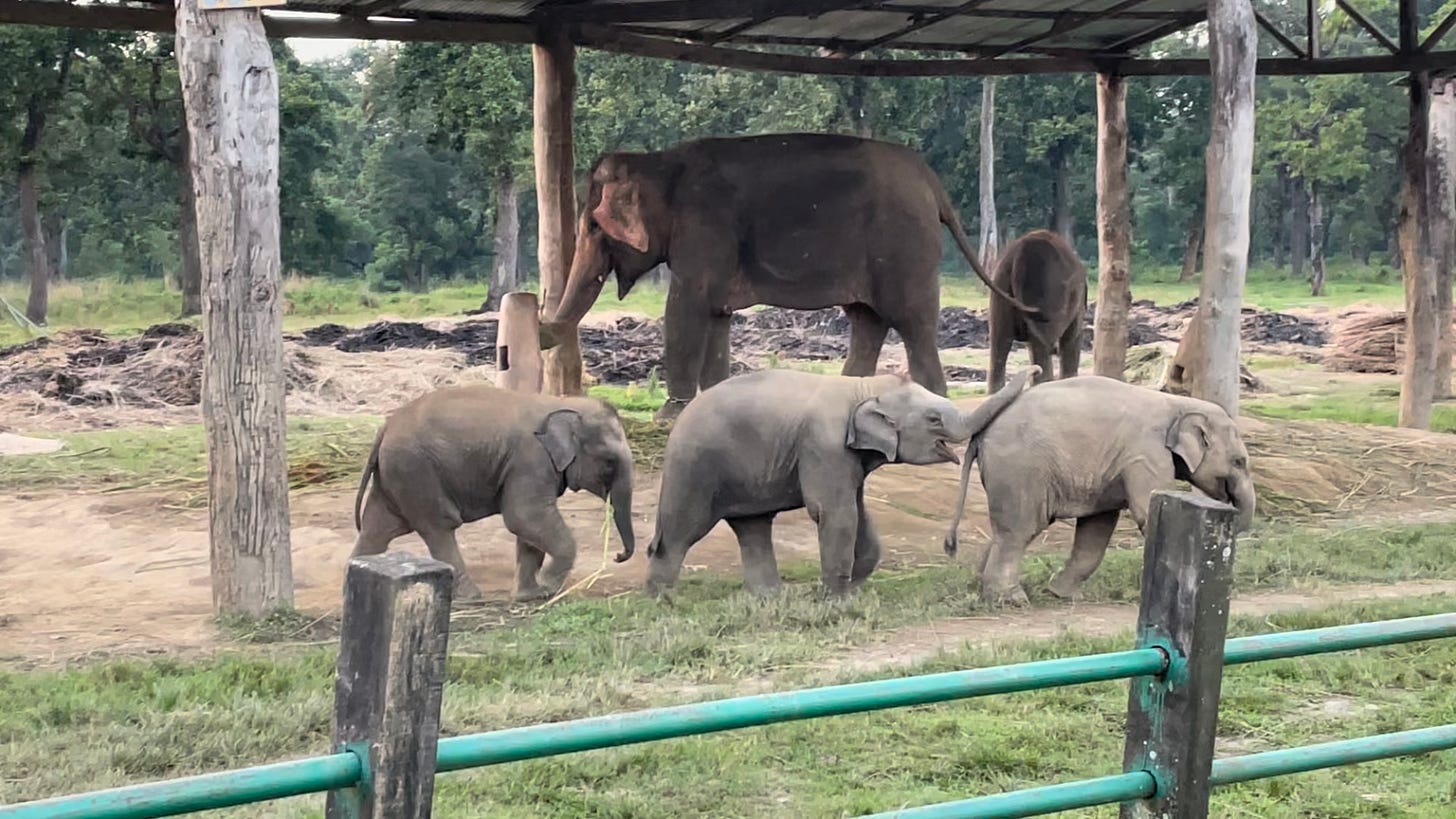

What a vivid travelogue! The baby elephants are too cute for words and the leopard... just astounding!